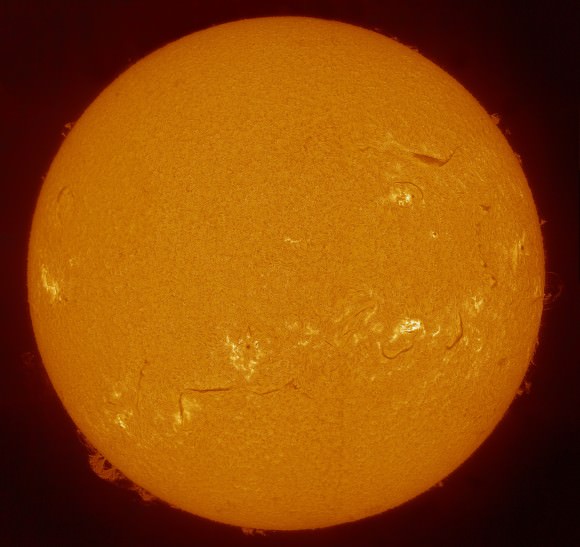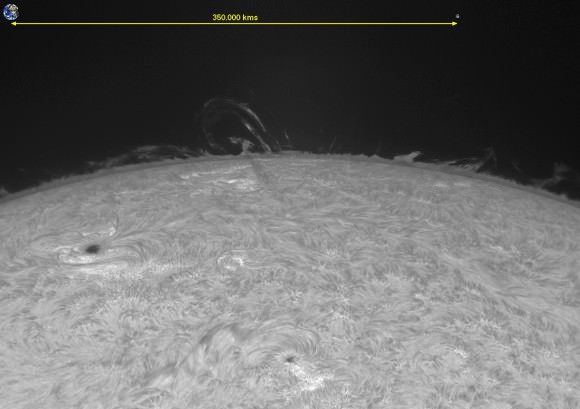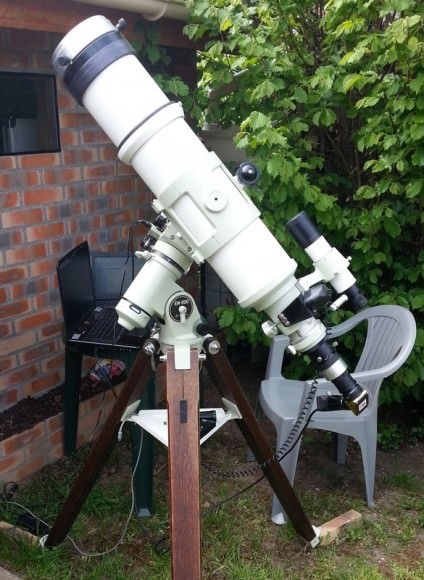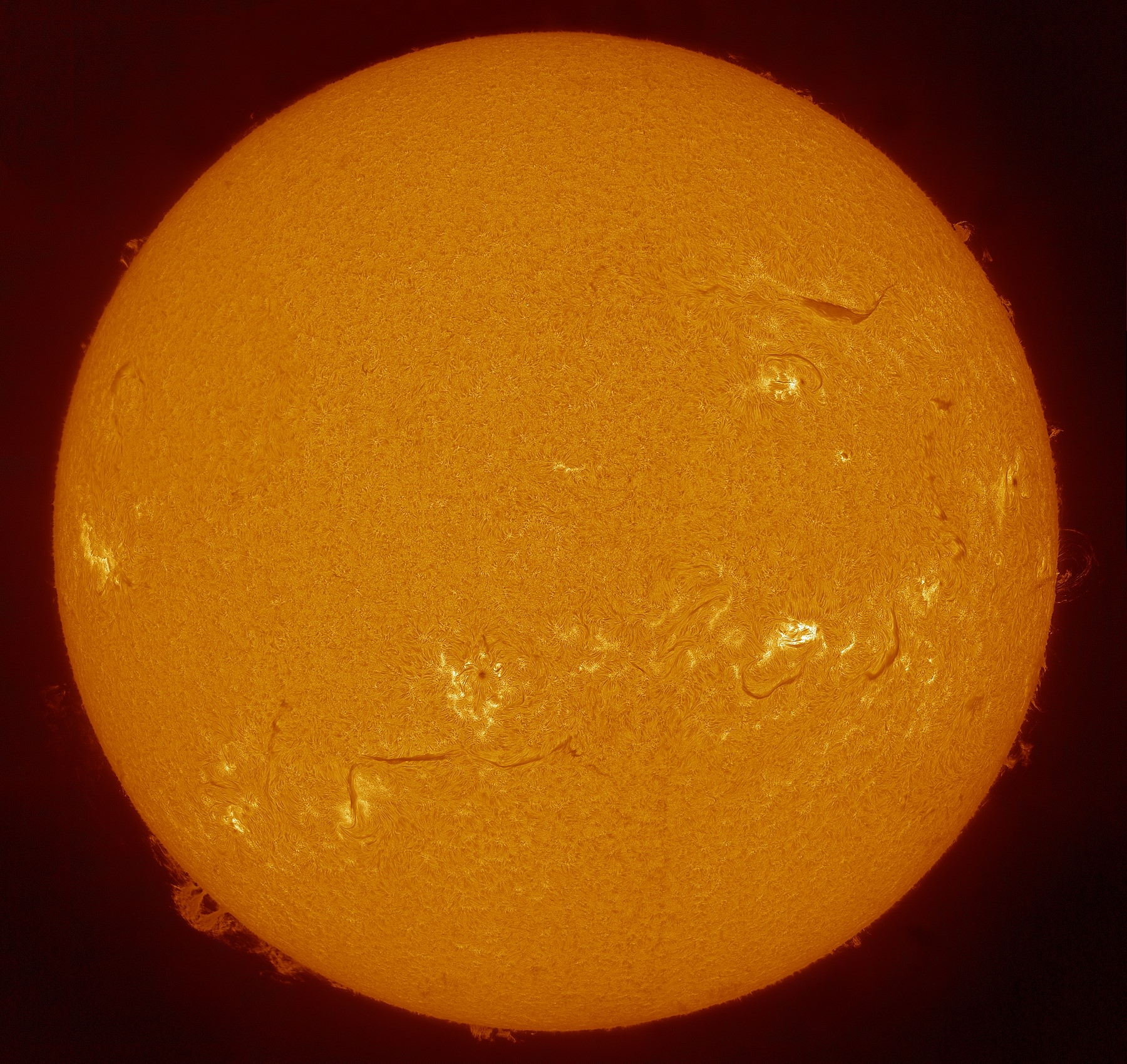This close-up movie of looping, dancing prominences on the Sun looks like something you’d see from one of the spacecraft we have studying the Sun, such as the Solar Dynamics Observatory. However, the images were taken from Earth by amateur astronomer Michel Collart from France. He was able to capture incredible detail (see his list of equipment below) of this region on the Sun’s western limb, and in a series of 120 frames, shows a lot of activity taking place on the morning of August 20, 2013.
It is easy to become mesmerized watching the matter ejected at high speed from the surface, then falling back down due to the Sun’s gravity.
“We saw beautiful loops this morning, and as a bonus, we see a beautiful ejection of matter from the left and return to its starting point — great!” Collart posted on the WebAstro Forum.
And while these loops are huge – see the image below comparing the size of the Earth and Moon to the prominences — this is just a small area of the Sun.
See the full view of the Sun taken by Michel:

And the comparison of sizes between the loops, Earth, the Moon and the distance between the Earth and Moon:

Michel told Universe Today that he’s been imaging the Sun for about 15 years and this is the first time he’s been able to take images of them. “These loops are very rare to catch,” he said.
The series of 120 frames (1 per 30 seconds, so 1 hour total) were taken by Michel on Tuesday August 20th, between 7:25 and 8:25 UTC on Tuesday, August 20, 2013, about the same time the Sun blasted a coronal mass ejection with billions of tons of solar particles toward Earth at the mind-boggling speed of 3.3 million km/h (2 million mph).
Here’s a video version of the loops, complete with music:
Michel Collart’s equipment and methods:

Takahashi Refractor TOA 130mm, Coronado Solarmax90 double stacked with Coronado PST etalon and blocking filter BF15, Televue 1.8x Barlow and Point Grey Camera Grasshopper3 ICX674 sensor.
120 videos of 10s spaced by 20s at 40 frames/s taken the 20/08/2013 between 7:25 and 8:25 GMT.
Processing: Autostakkert2 + Registax6 and export as video on Registax5, Finalizing the video in VirtualDub and export GIF
Thanks to Michel for allowing Universe Today to share his wonderful work!


great job Michel! fantastic work.
I am never dissatisfied with what passionate amateur amateurs can produce.
Stunning!
The Sun is so bright, I wonder how its possible to capture the Sun with so much details ?
Either by using a solar filter on the telescope or by using a specially designed solar telescope.
Puzzling to see that matter seems to be sucked backed into the sun under an ange of 30 deg. or so (well, hard to say on a 2D view, but certainly not 90 deg.). Can not be gravity, right ? Or are there several separated mass centers in the sun. But then how can it be such a nice ball. Any answers out there ?
The plasma is following the curved magnetic field lines found in coronal loops: http://en.wikipedia.org/wiki/Corona#Coronal_loops
Thanks for the explanation John – still fascinating !
Have not seen before, Earth-Moon distance comparative-scale use. But in measure, Sun’s curvature is a puzzle, and does not compute. (I’m missing something.)
Remember old astronomy books, illustrated with big-observatory pictures. Yet, with today’s “amateur” astronomy images, they hardly compare. No small role, advanced sophisticated equipment, plays its share. But knowledge and skillful use, ever required, in Solar glare.
A boldly scored, marvelous “movie”. A wonder to behold!